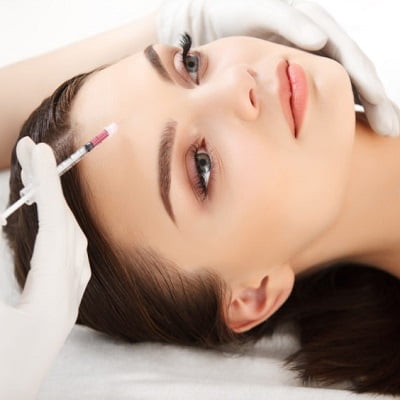
Do you ever feel frustrated by the lines and wrinkles on your face when you look in the mirror?
Now enhance your looks with dermal fillers. For those seeking non-surgical cosmetic enhancement, cheek fillers have grown to be a popular choice. They can help create a more youthful and contoured appearance, restore volume lost with ageing, and help make hollow or sunken cheeks look better. Before making a decision, it’s critical to have all the information you require if you’re thinking about getting cheek fillers. To assist you in making an informed choice, we will address 5 frequently asked questions about cheek fillers in this article.
Do Cheek Fillers First Appear Uneven?
Following the procedure, cheek fillers could at first seem uneven. There are several causes for this, including:
Swelling:
Any treatment that uses an injectable, including cheek fillers, frequently results in swelling. After the procedure, the swelling may make the cheeks appear uneven for a few days.
Bruising:
Another typical side effect of cheek filler injections is bruising. Uneven cheeks can result from bruises, especially if one side of the bruise is more noticeable than the other.
Injection technique:
The type of injection can also affect how the cheeks look. This can happen if you apply filler unevenly or if the injector employs a poor technique. It’s crucial to remember that as the swelling and bruising go down and the filler sets in, any unevenness in the cheeks should gradually get better. To address any concerns and make any necessary adjustments, it is best to follow up with your injector if you are unhappy with the way your cheeks look after a filler treatment.
How Much Cheek Filler Does One Syringe Provide?
Depending on the brand and type of filler, one syringe may provide a different amount of cheek filler. However, a single syringe of filler typically holds about 1 ml of product on average. Depending on the person’s facial anatomy, desired outcomes, and the injector’s advice, the amount of filler needed for cheek augmentation will vary.
How Can You Tell if Cheek Filler Went Bad?
Since cheek filler is a medical product, it has guaranteed effectiveness and safety. A bad filler may exhibit different symptoms. This may entail a change in colour or texture, a separation of the components, or an odd odour. It’s crucial to speak with your injector or healthcare provider right away. Contact us if you think your cheek filler may have gone bad.
After Filler, Do Cheeks Regain Their Normal Shape?
It is common to experience some swelling and bruising after a cheek filler procedure. This can momentarily change the shape of the cheeks. But as the bruising and swelling go down, the filler should start to take shape. The cheeks should return to normal. To achieve the best results, it’s crucial to adhere to any post-treatment instructions. Hence, you must follow the instructions that your injector may have given.
After Having Cheek Fillers, Can You Smile?
Yes, you should be able to smile normally following cheek fillers. While we intend cheek fillers to improve the contours of the cheek area, they shouldn’t limit the range of motion or expression of the face. To ensure that the filler placement is correct and does not interfere with the function of the facial muscles, it is crucial to select an experienced and qualified injector.
Book Your Consultation:
Are you prepared to find out if dermal fillers can help you? Our team at SKN Cosmetics Islamabad exclusively focuses on the face and neck when performing a variety of cosmetic and reconstructive procedures. To schedule an appointment, call us or fill out the form given below.








